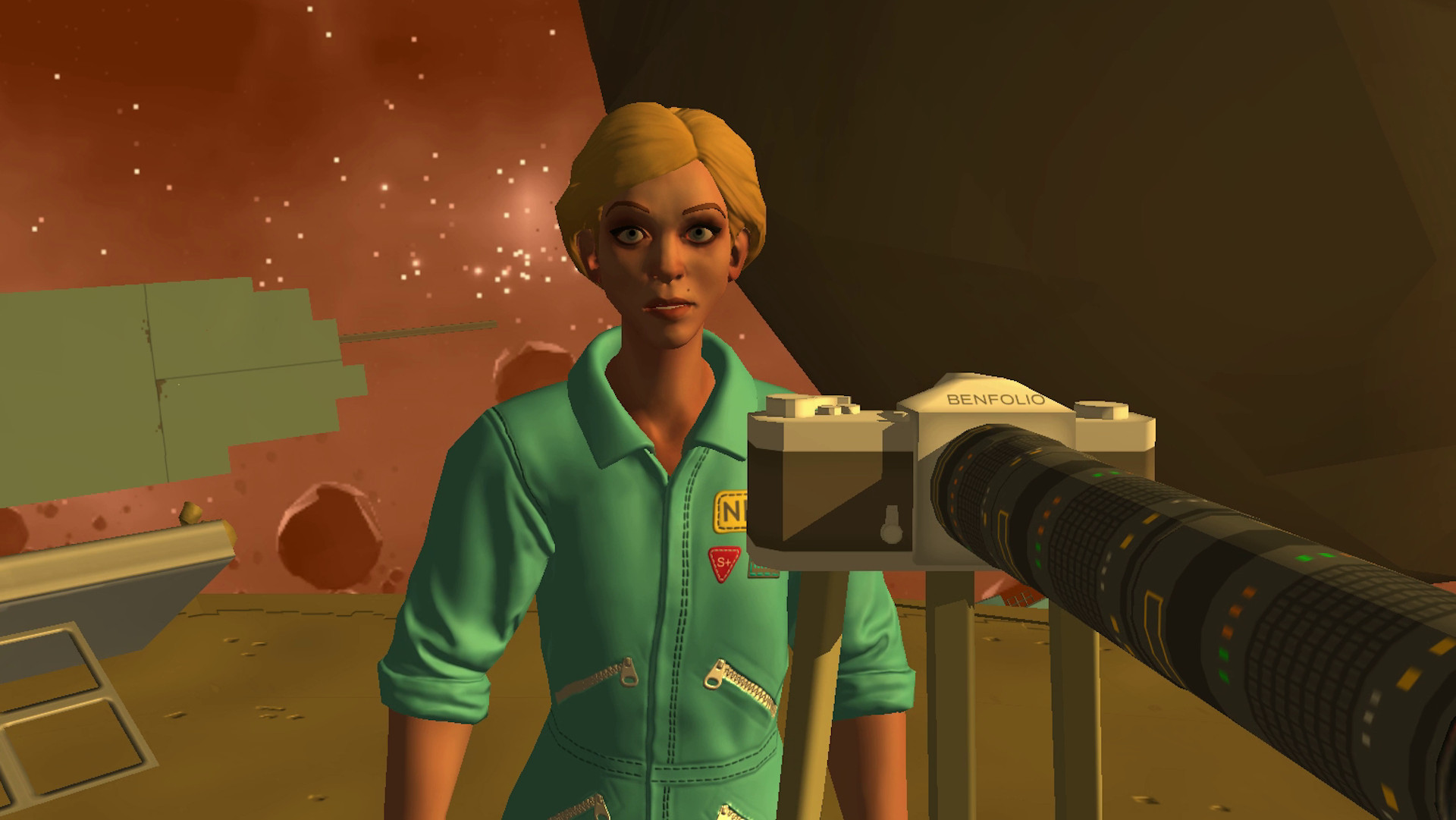Halo: Reach brings the series back to PC with a mostly fantastic port
There's still work to do on audio, framerate smoothness, and graphics settings, but Reach feels great to play on day one.
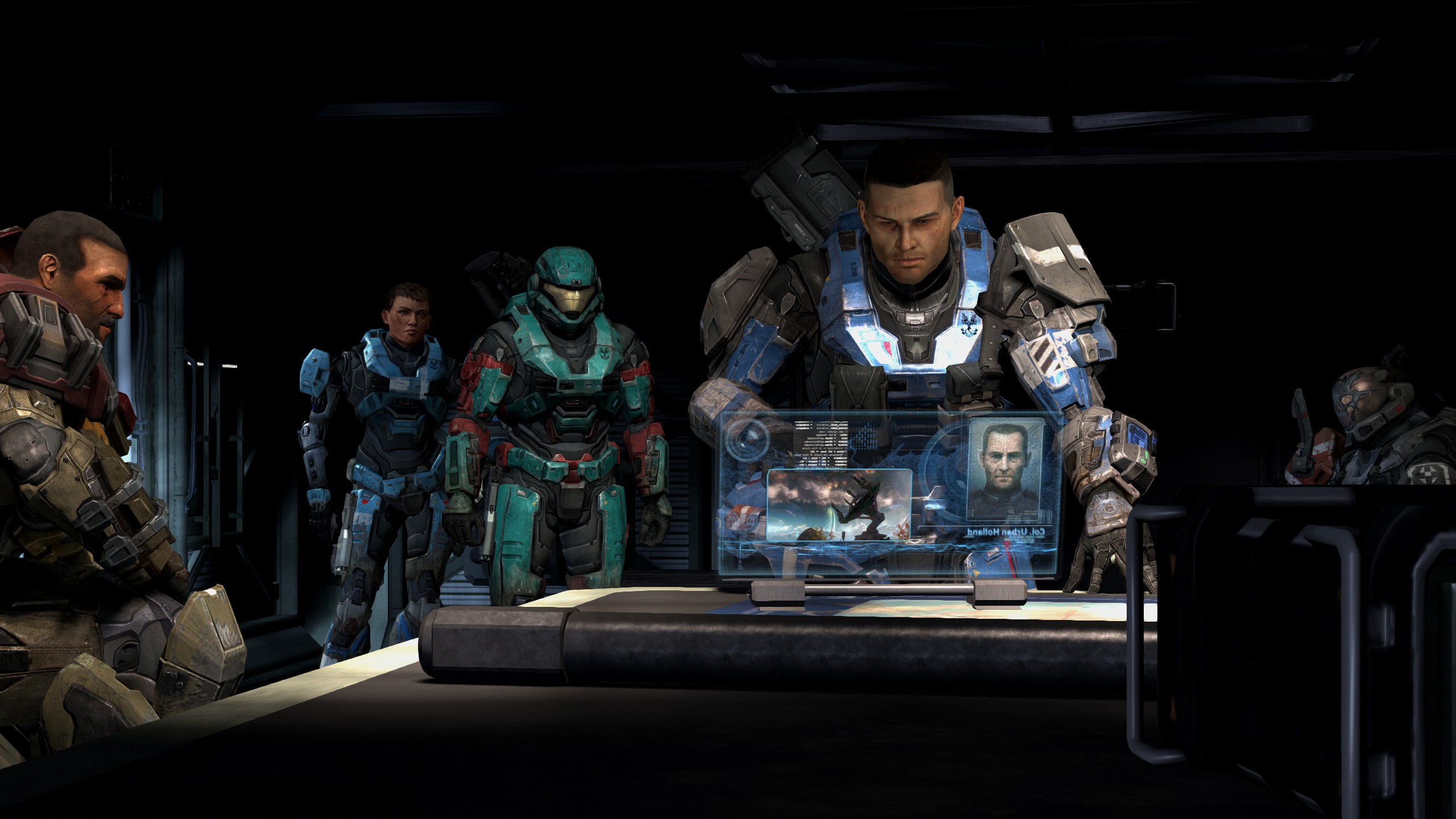
Five years ago, Microsoft released Halo: The Master Chief Collection on the Xbox One, uniting nearly the entire Halo series in one mammoth game. It was a disaster. The collection was so buggy and broken, Halo developer 343 Industries has spent the past few years fixing its many, many issues. Today that apology tour finally arrives on PC with Halo: Reach, the 2019 release of a 2010 Xbox 360 game. I played it on Steam alongside 140,000 other people who are, clearly, excited to play a Halo game on PC again. Good news for all of us: Reach looks great, feels great, and has almost everything I'd want out of a PC port. It's the opposite of the Master Chief Collection's terrible debut.
After a few hours of testing the campaign and multiplayer, I'm confident that this nails the fundamentals of a good PC port. It runs smoothly on fairly modest hardware, as a port of a 2010 game should. On my i7-6700K and GTX 980, running Reach at 1440p, my framerate mostly hovered between 180 and 220 fps when unlocked. I didn't experience any stuttering, crashes, or significant issues. I also didn't run into any lag in online multiplayer. Even super fast paced one-hit-kill SWAT matches felt perfect, thanks to dedicated multiplayer servers and mouse controls that, as best as I can tell, feel just as good as other FPS games on PC.
There are some features missing from this PC port that I hope 343 Industries adds as it continues to expand the Master Chief Collection on PC. It could use more granular graphics settings and alt key bindings, but there's nothing here that stops me from having a lot of fun playing Reach right now.
Here's the quick technical breakdown.
Framerate options: 60 fps and unlocked
Unlocked framerate! Bless. Halo: Reach offers only two options here, listed under an "experimental settings" header in the video settings menu. You can lock the framerate at 60 fps, or set it to unlimited. Reach also supports enabling and disabling V-Sync to eliminate screen tearing. One bit of weird UI design here: you have to tab the framerate setting to the left to select unlimited, rather than to the right as you'd expect.
In blog posts, 343 has said this unlocked framerate implementation isn't final, and the developer is already working on post-launch updates for Reach. Unfortunately, I noticed significant screen tearing in campaign when playing with an unlocked framerate. But it's an easily solvable issue. You can use a program like Rivatuner to lock in a refresh rate like 144 Hz, or play on a G-Sync or FreeSync monitor, or choose to use V-Sync or the 60 fps lock.
I really only noticed the tearing during cutscenes on my 144 Hz monitor; it may have been present in gameplay, too, but if so it never proved distracting for me.
The biggest gaming news, reviews and hardware deals
Keep up to date with the most important stories and the best deals, as picked by the PC Gamer team.
Also, it's nice to see cutscenes running at a smooth 60 fps now. Back on the Xbox 360, Halo Reach was capped at 30 fps, but dipped below that threshold from time to time.
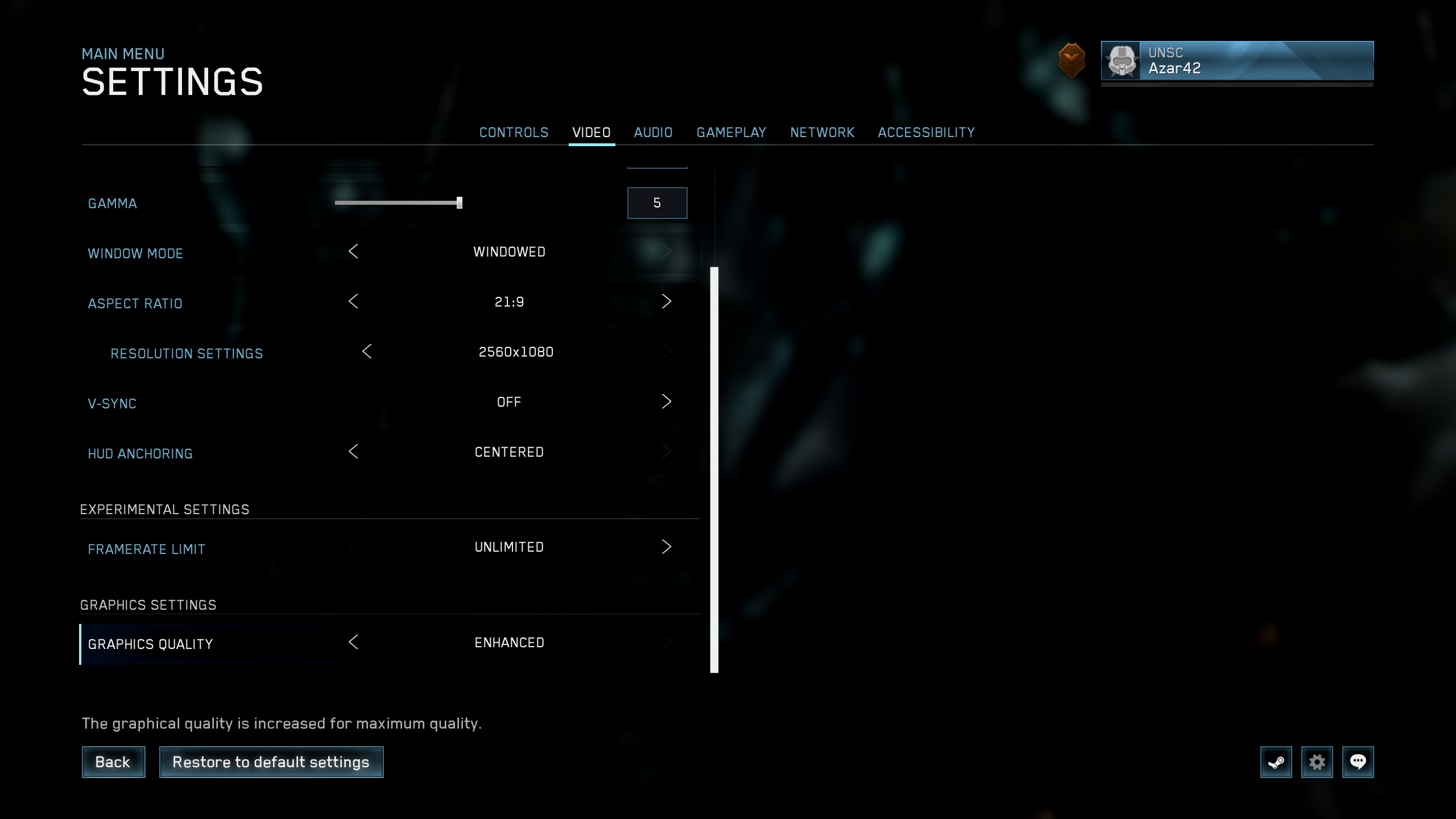
General graphics settings: Sadly spartan
If there's any blatant indication Halo: Reach is a console port, it's in how barebones its video settings are. Thankfully the crucial settings are here: FOV, window mode, framerate, and graphics quality. But compare Reach to a PC port like Red Dead Redemption 2, which has dozens of individual toggles, and its single graphics option—Performance, Original, or Enhanced—seems lacking.
Granted, this is a nine-year-old game, and it runs so well we don't need individual settings for elements like lighting, texture quality, draw distance, and the like. They're presumably all maxed out. But it would be nice to see options like anti-aliasing, ambient occlusion, and a more detailed breakdown of what these quality settings entail. "Graphical quality is increased for maximum quality," the description for Enhanced, doesn't tell me much.
It also doesn't do much, at least not when you change the setting in-game. I took screenshots on Original and Enhanced that look exactly the same, even when you zoom in on textures. It's going to take more testing to pick apart what's going on here, but ultimately this is still an old game being cleaned up and run at modern high resolutions. Without a dramatic remaster, this is about as good as I'd expect Reach to look.
The UI, however, doesn't look as sharp as it should on my 2560x1440 monitor. Was it built for 1080p?
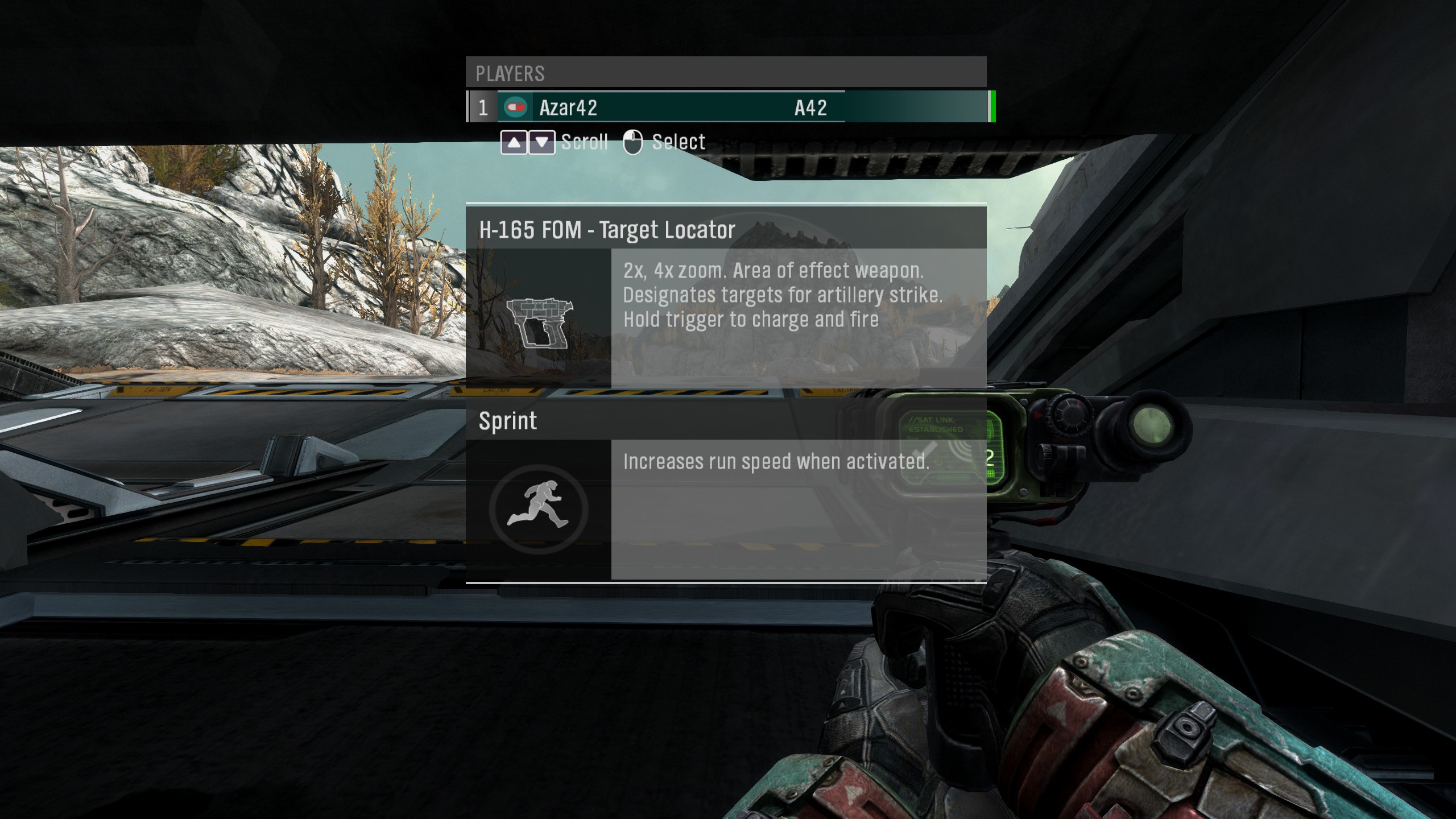
FOV options: Sliiiders
Hell yes, FOV sliders. Halo's console FOV has always been restrictive, but on PC we have the blessed freedom of not one but two FOV sliders. One controls your first-person view, and the other controls the third-person vehicle camera. Both sliders range from 70-120, with 78 as the default. I comfortably kicked it up to 95 or so with no fisheye distortion.
Here's a comparison of FOV at 78 (default), 90, and 120 (max).
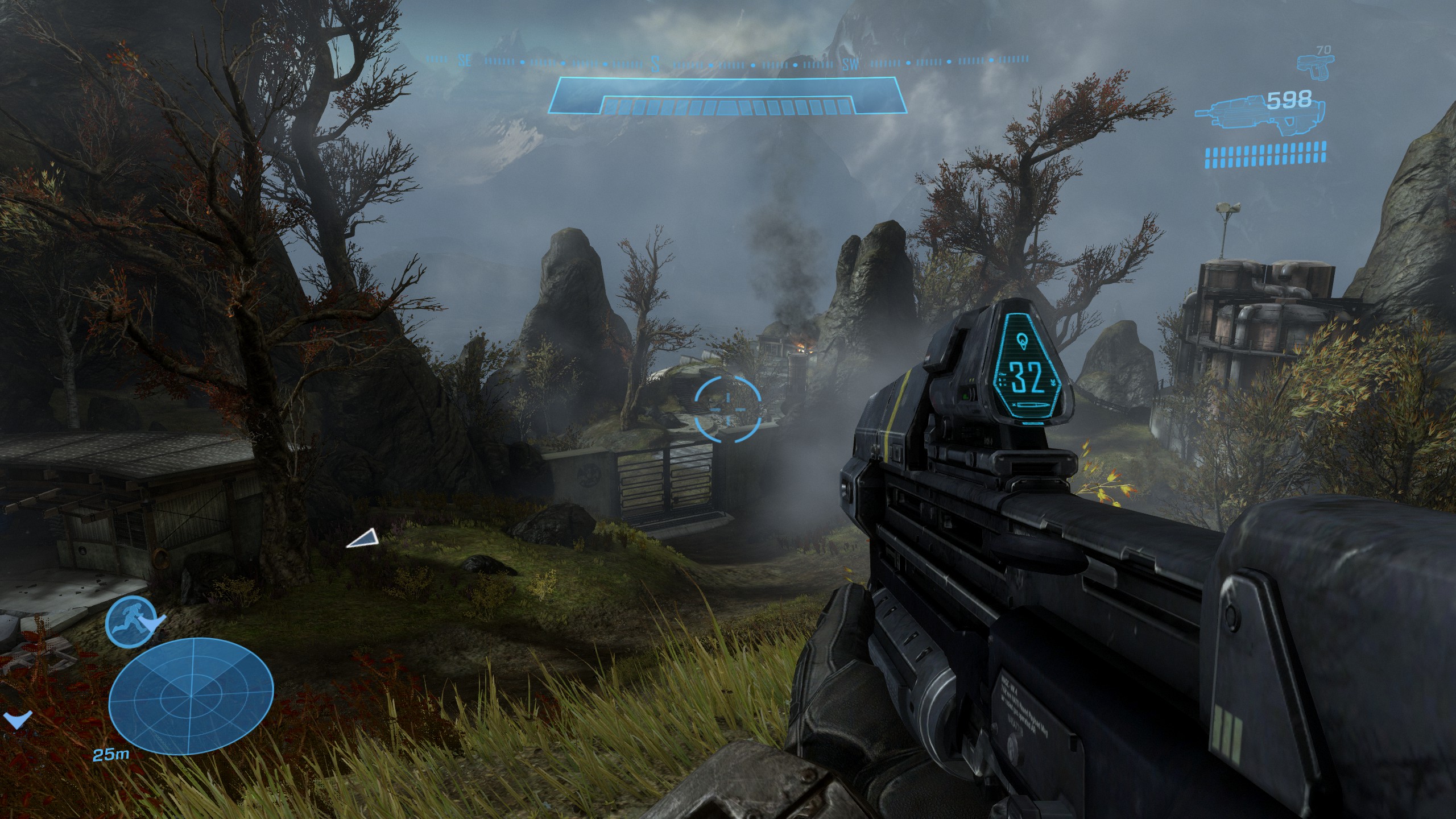
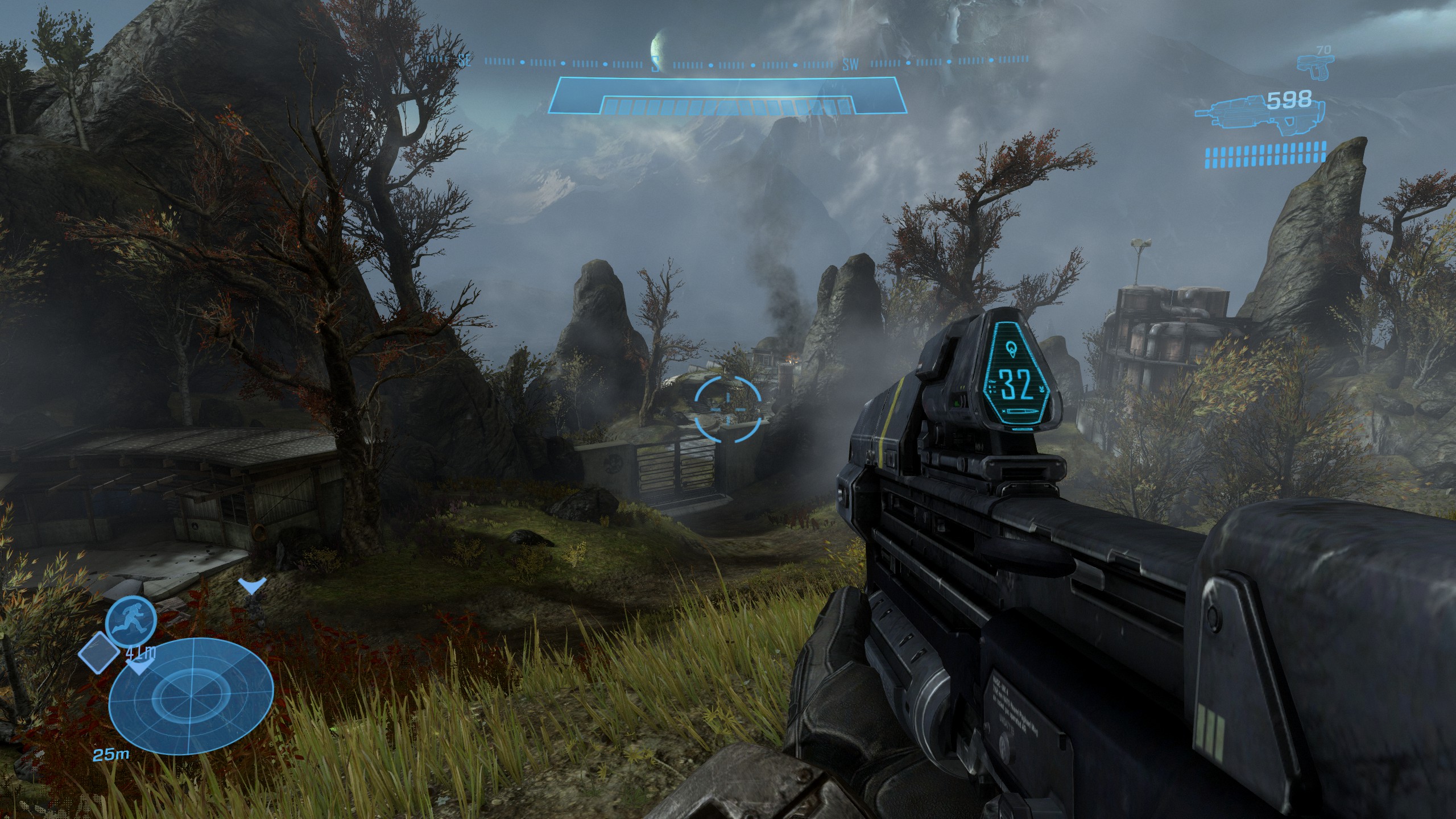
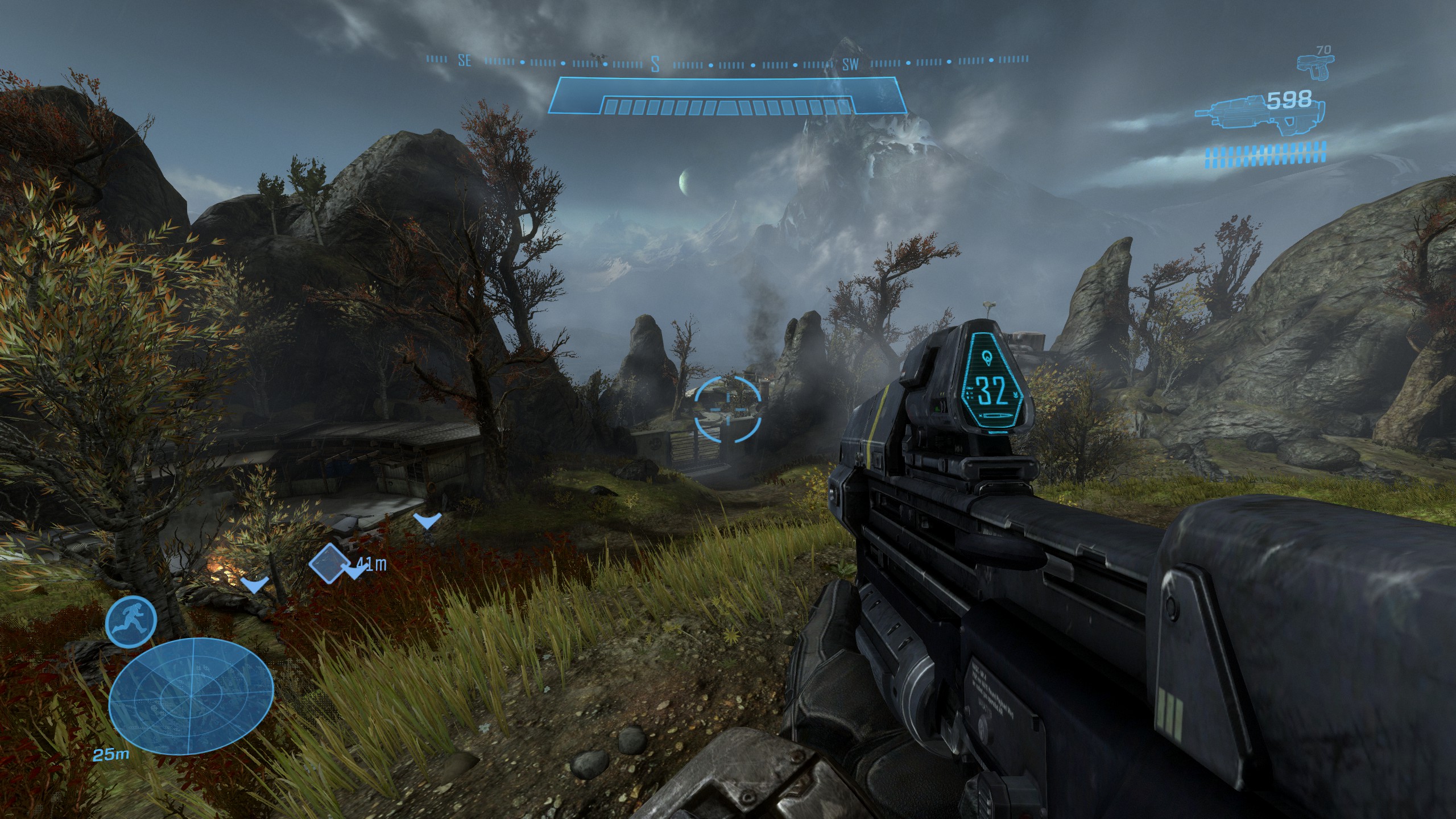
Ultrawide support: Very nice
Not only does Halo: Reach support ultrawide monitors, but it supports setting a windowed aspect ratio regardless of your monitor's default. The options are 16:9, 16:10, 21:9, 4:3, and 3:2. I love how convenient this option is.
Another great touch that some other games lack: a "HUD anchoring" feature that lets you attach the HUD to the center of the screen or the edges. It doesn't matter in 16:9, but in 21:9, it lets you bring important HUD elements like the motion sensor into easy view, rather than abandoning them to the eye-straining corners of the screen. I'd love to see an option to scale the HUD size up/down and more manually refine its screen positioning, but that's getting greedy.
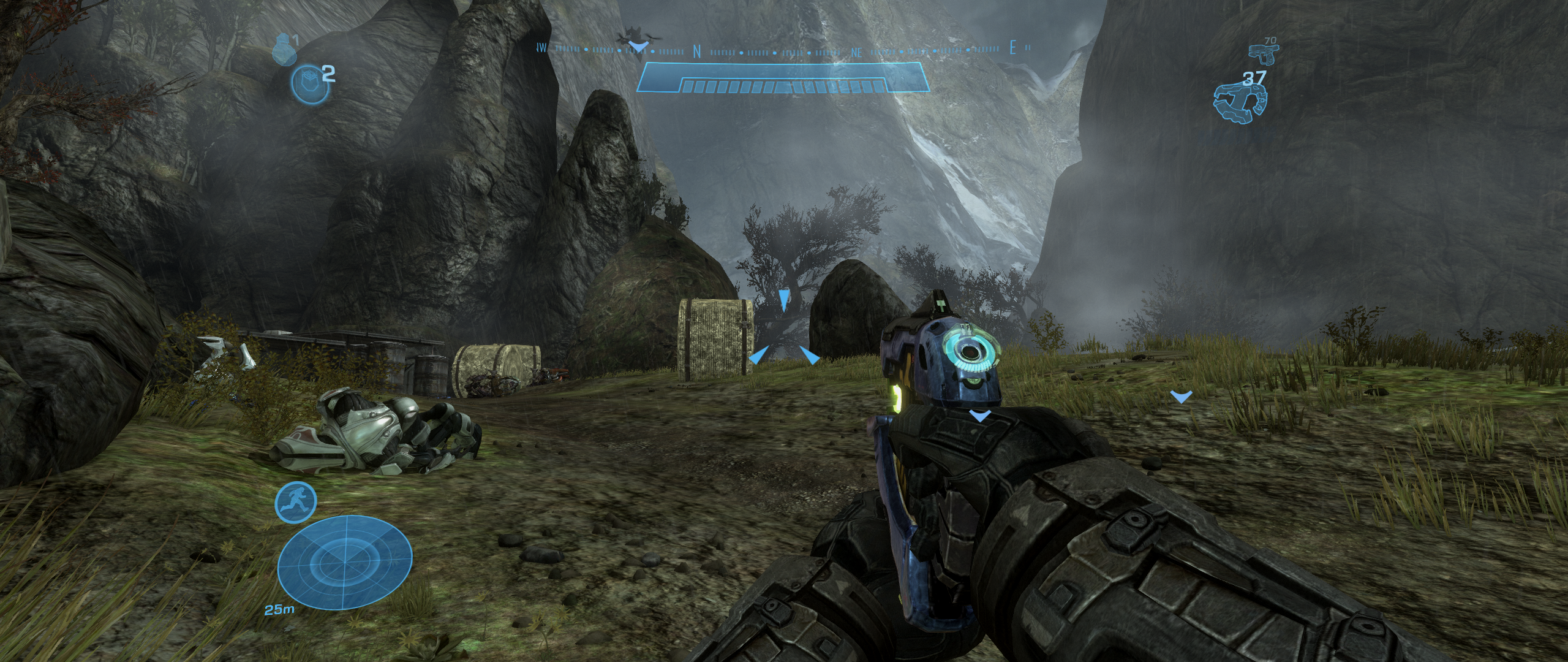
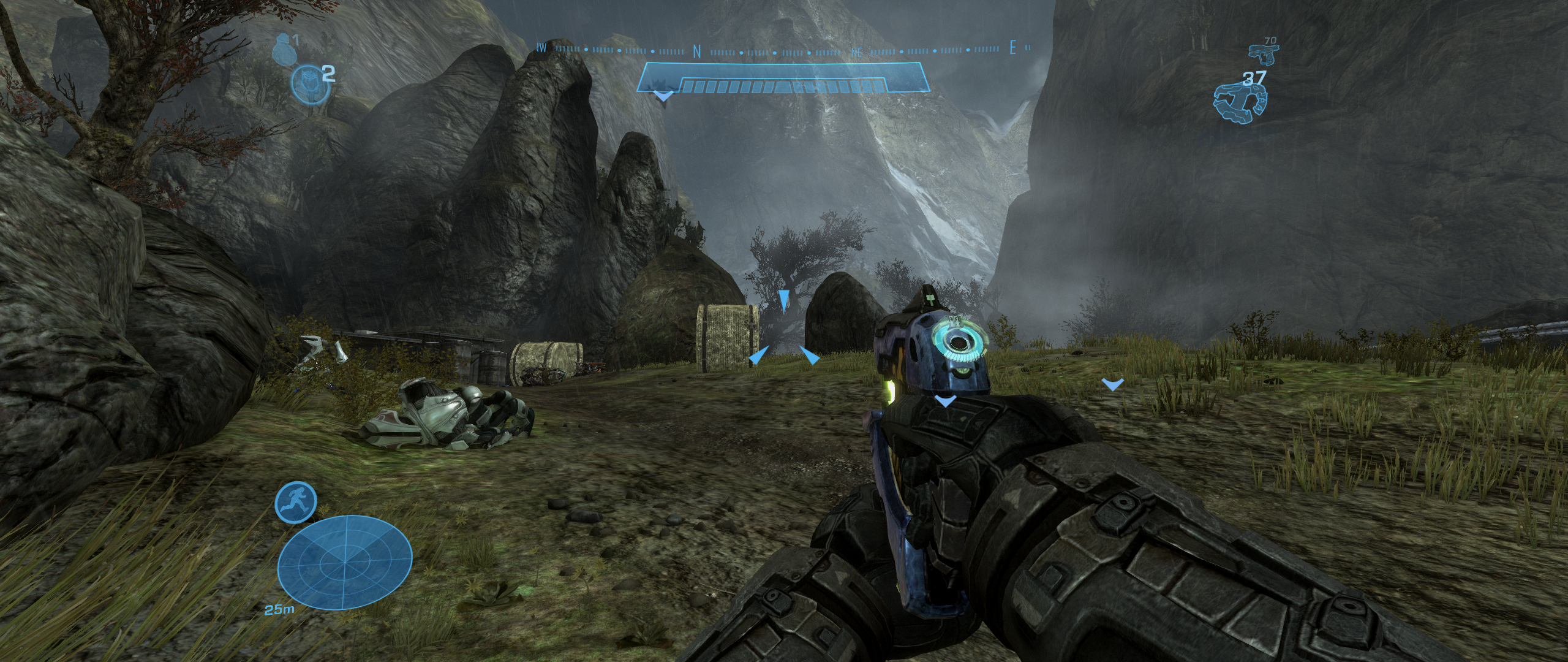
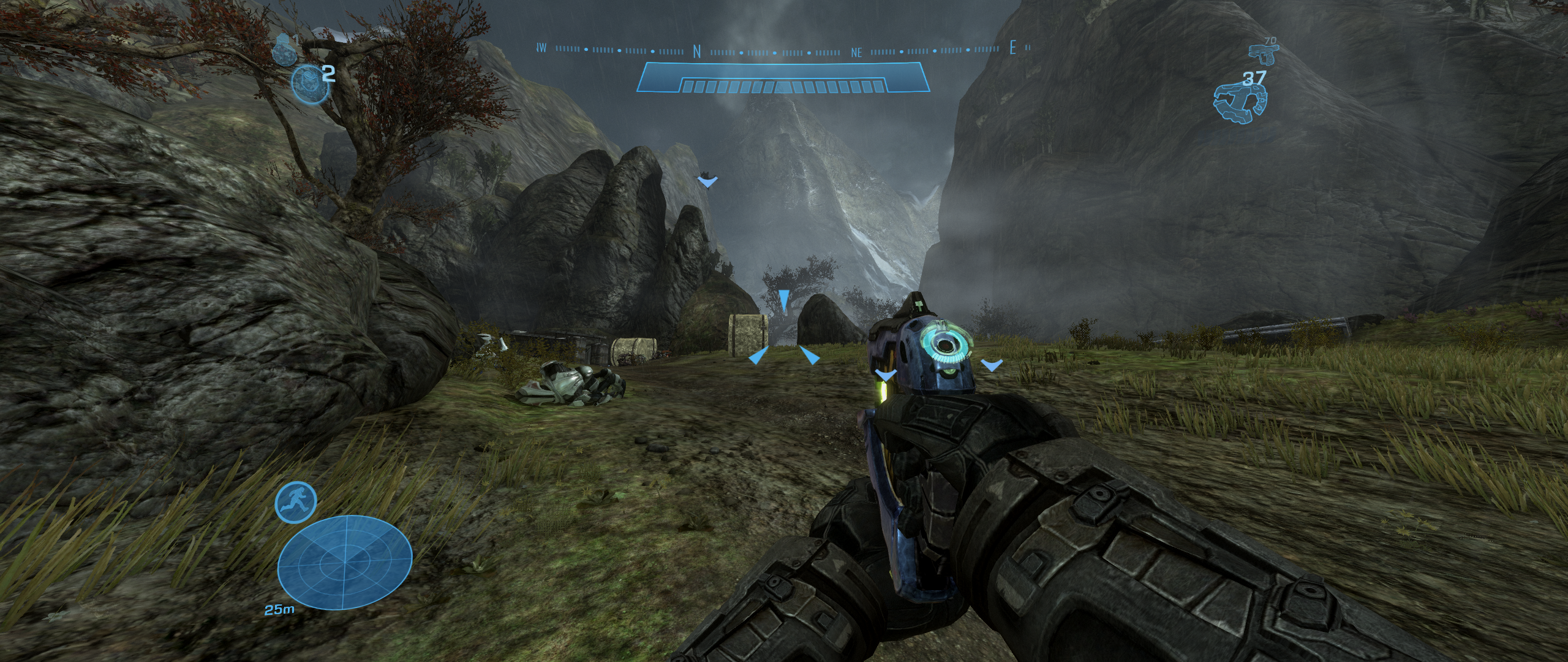
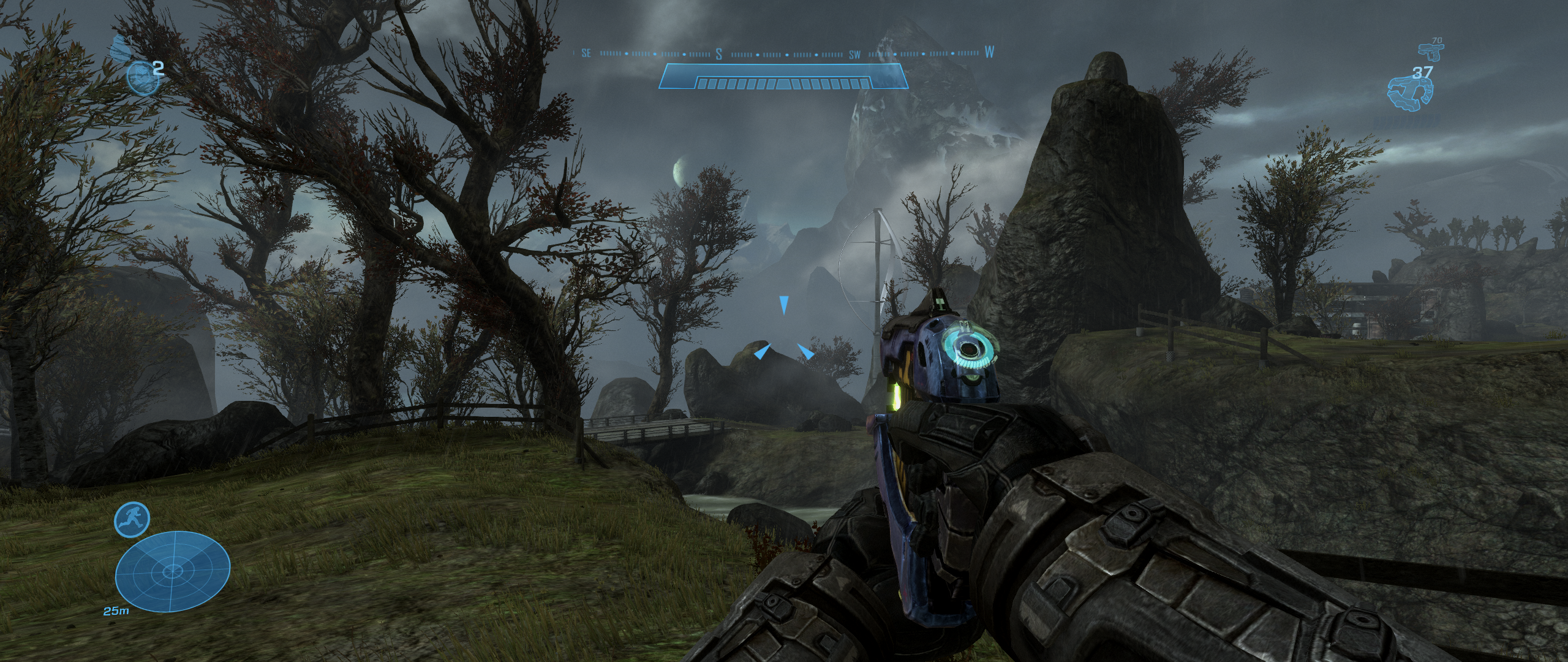
Keyboard and mouse controls: Feel great, missing a few options
Man I love playing Halo with a mouse. My mind goes back to all those hours playing Capture the Flag on Blood Gulch, two-shotting spartans from across the map with the greatest pistol ever put in a videogame. I know mouse controls are one element of Reach that 343 has been refining across multiple beta tests, but if there are any issues left, I didn't notice them. The mouse feels good.
The PC controls are rebindable, and the default key bindings mostly make sense. One poor bind is "L" for selecting your multiplayer loadout. L for Loadout makes logical sense, but practically it's no good—with one hand on WASD and the other on a mouse, reaching over to L in the few seconds before you respawn is no good.
The biggest thing missing here is the ability to add alternate keybinds, something most PC games support. I'd like to be able to bind commands to my mouse buttons and scroll wheel without losing the keyboard bindings for those actions.
Network play: So far, so good
I've only played a handful of multiplayer matches, but in free-for-all and 16-player Big Team Battle, the experience was great. I encountered no lag in any of my matches, and bullets seemed to land exactly where they should. Like any online experience, I'm sure Halo: Reach's isn't flawless for everyone, but there are at least no glaring issues for me so far.
I was also pleasantly surprised that Firefight, Reach's PvE multiplayer mode, worked flawlessly online. I remember playing Reach's Firefight back in 2010 and having a terrible time. Back then the game used peer-to-peer networking, which worked fairly well for regular multiplayer, but fell to pieces in Firefight because it had to account for what all those AI units were doing. I actually wrote about how much better Firefight would be with dedicated servers earlier this year, and so it has come to pass. In two matches, the network experience felt just as smooth as it did in PvP.
I will note, though, that matchmaking sometimes took longer than I'd expect. With more than 100,000 active players, I would think even a 16-player match would fill up in seconds, rather than the three minutes or so I had to wait. But it's possible the servers are struggling to handle the launch day demand.
What's missing: Theater, Forge, and tiny touches
Halo: Reach on Steam is $10 well-spent right now, on launch day. It is the best-looking, best-playing version of Reach ever. Still, I'd like to see some improvements before it's considered finished:
- Expanded, or at least better explained, graphics settings
- A finalized framerate implementation that includes built-in framelimits for common refresh rates like 144Hz, to eliminate tearing
- Alternate keybind options
- A UI that feels less "console first" in some places—for example, scrolling left/right through needlessly small thumbnails to choose a multiplayer map
- No local splitscreen support is a bummer
- Users have reported issues with the audio, which does sound fairly subdued; in a November 22 post, 343 said it has improvements in the works for a later update
- There's some wonkiness with Steam friends and Xbox Live friends showing up in-game that 343 has noted to be fixed
At launch, two of Reach's original modes are missing: Theater, for editing screenshots and videos, and Forge, for creating custom maps. "These complex features require additional work and fine-tuning in order to support the additional requirements (and opportunities) offered on PC. Work is already well underway on these features (and additional post-launch updates to Reach) and we’ll share more details later next year," says the official site.
I did find myself really missing Theater today, as I wanted to take some screenshots of Reach running high-res. But given how well this port runs, I don't mind waiting. 343 focused on nailing the essentials, and they succeed. Halo is back on PC, and it feels good. Now then: Bring on Halo 3, please.

Wes has been covering games and hardware for more than 10 years, first at tech sites like The Wirecutter and Tested before joining the PC Gamer team in 2014. Wes plays a little bit of everything, but he'll always jump at the chance to cover emulation and Japanese games.
When he's not obsessively optimizing and re-optimizing a tangle of conveyor belts in Satisfactory (it's really becoming a problem), he's probably playing a 20-year-old Final Fantasy or some opaque ASCII roguelike. With a focus on writing and editing features, he seeks out personal stories and in-depth histories from the corners of PC gaming and its niche communities. 50% pizza by volume (deep dish, to be specific).

